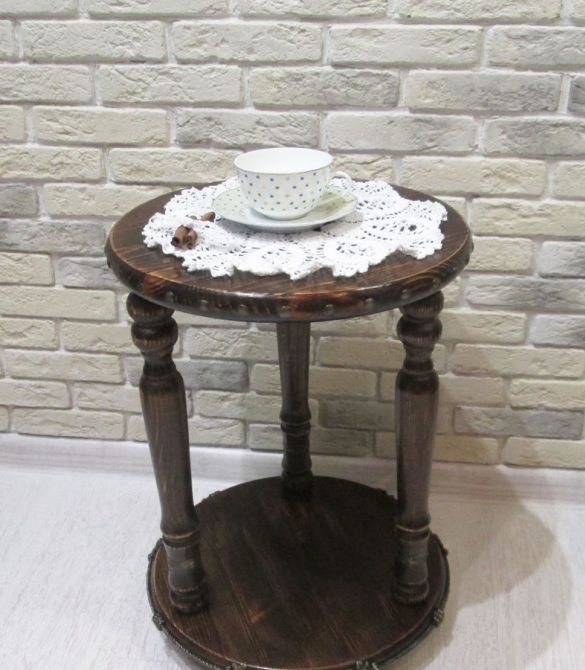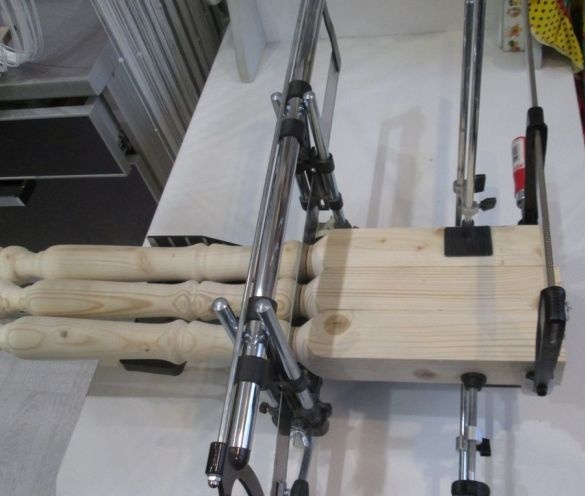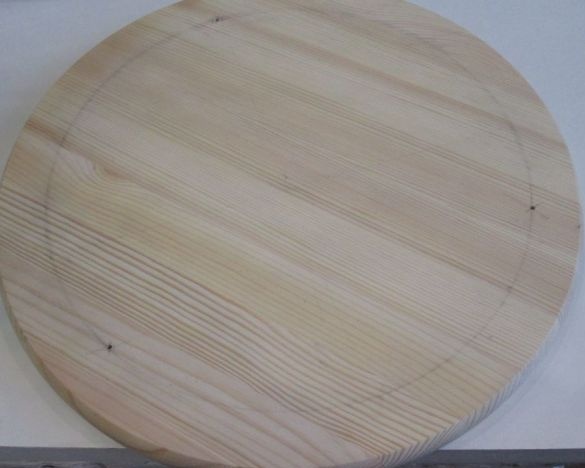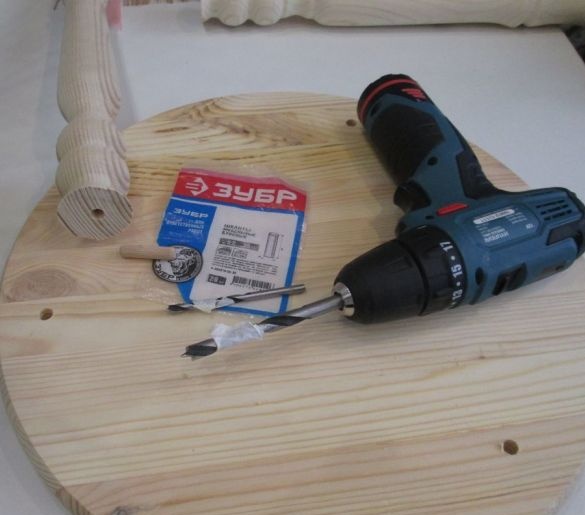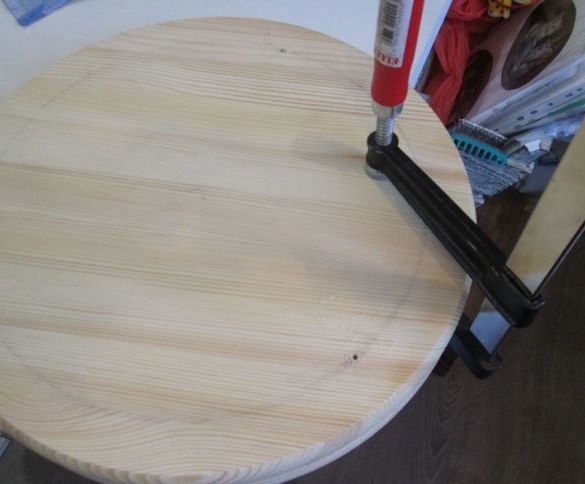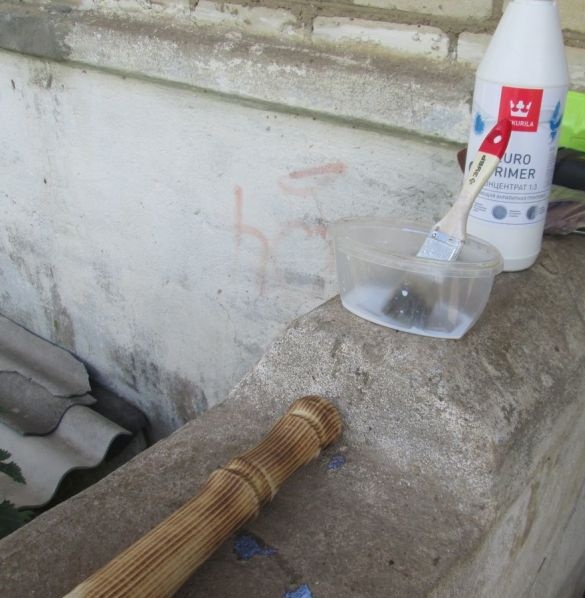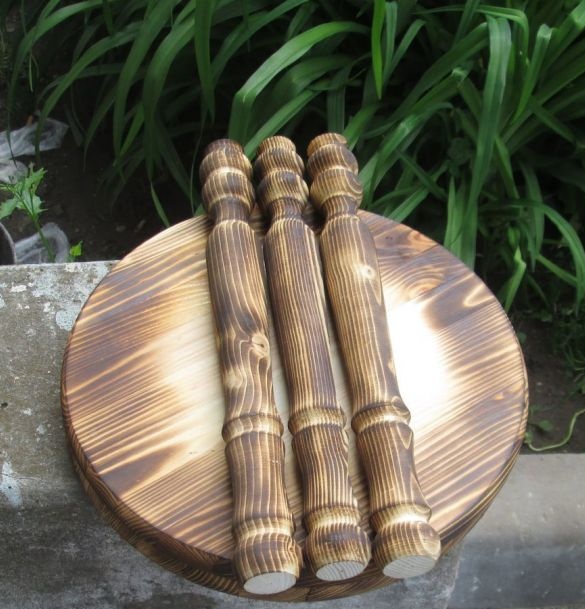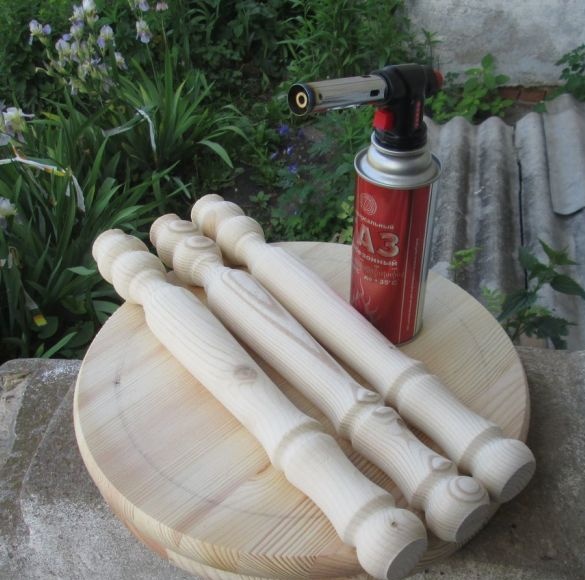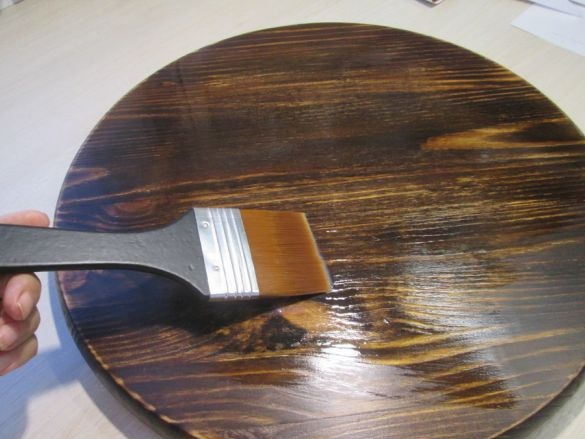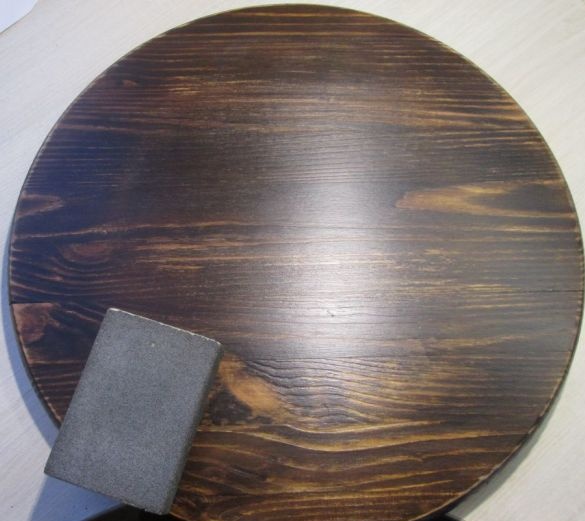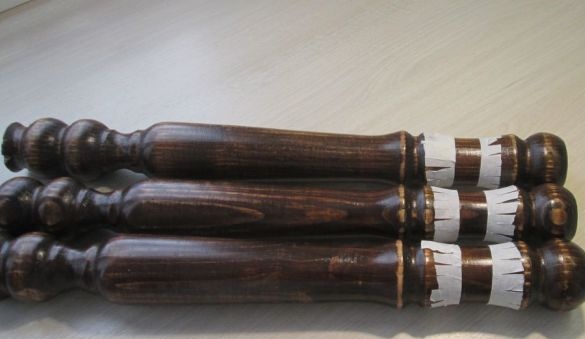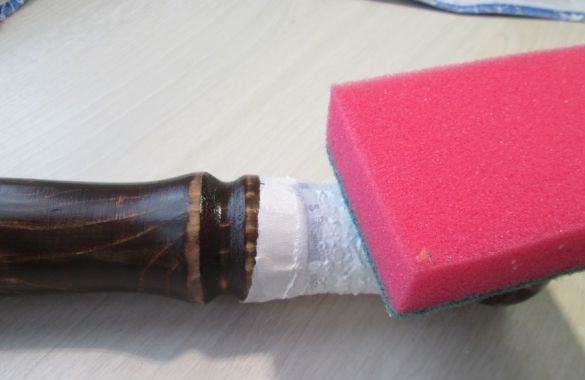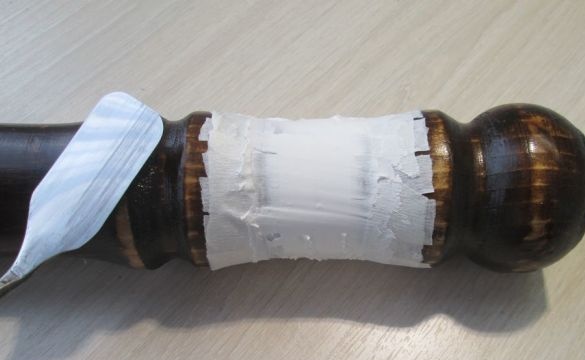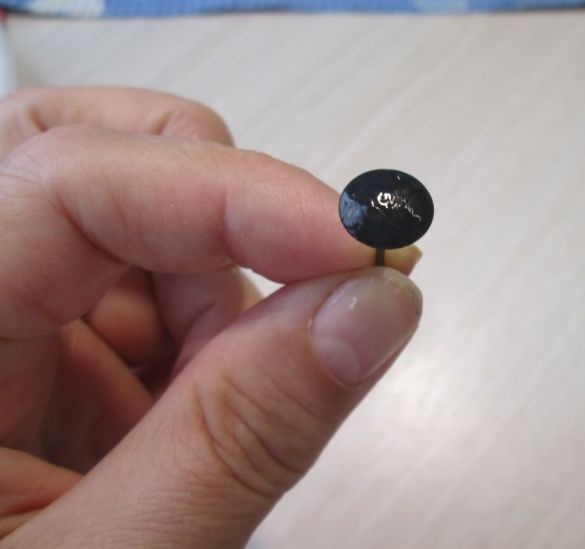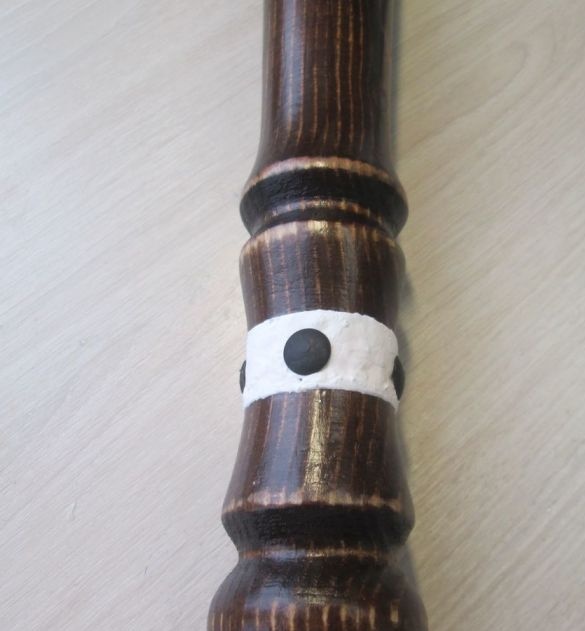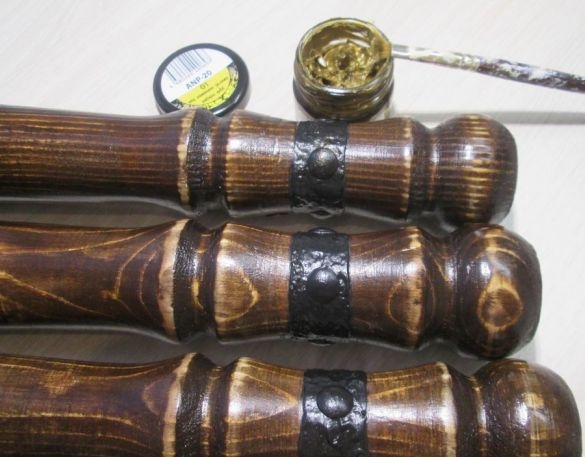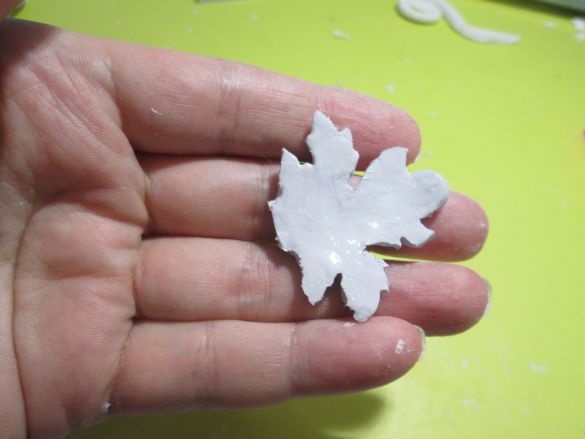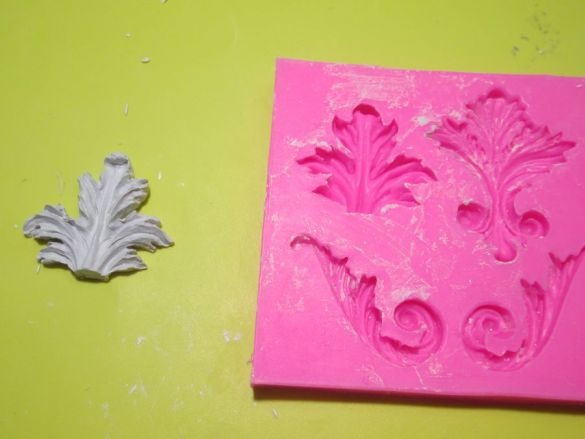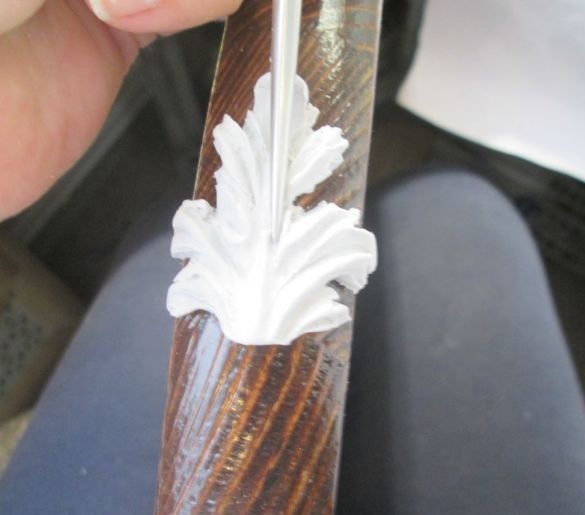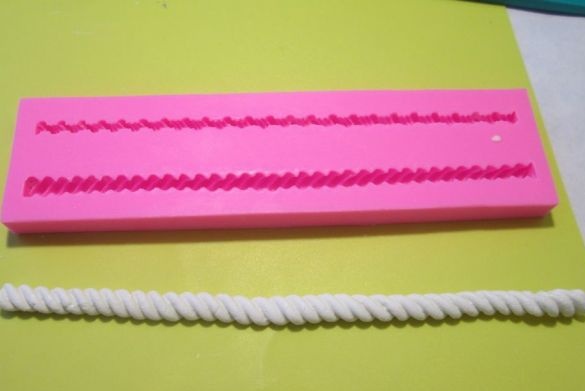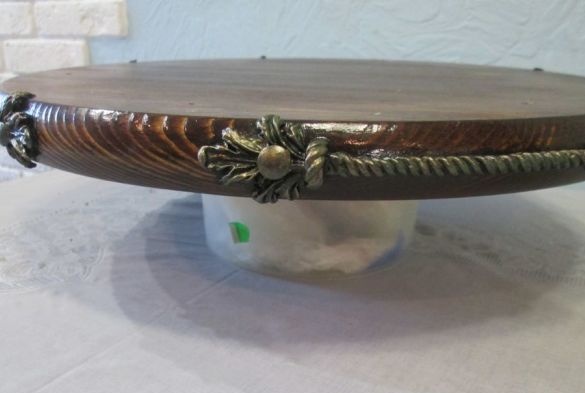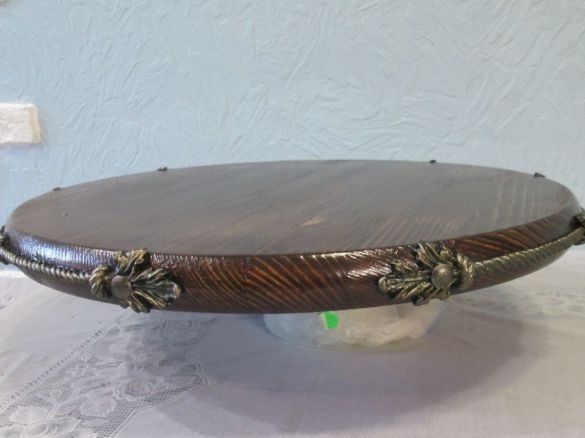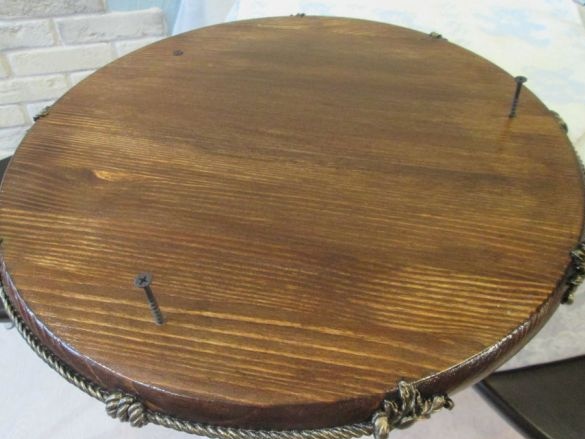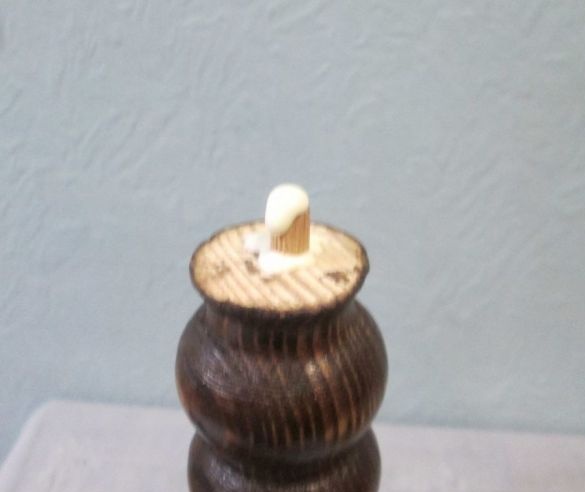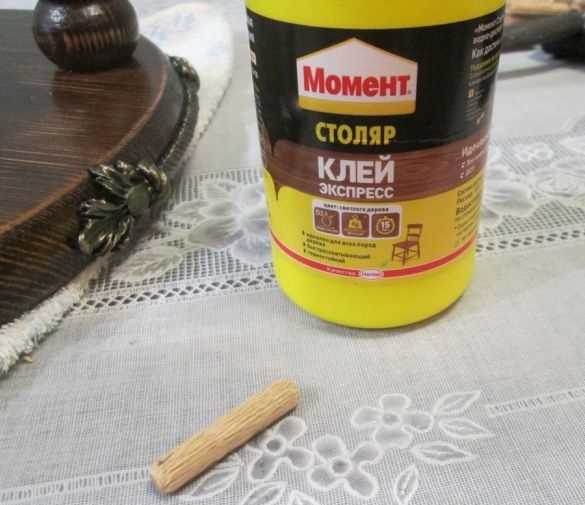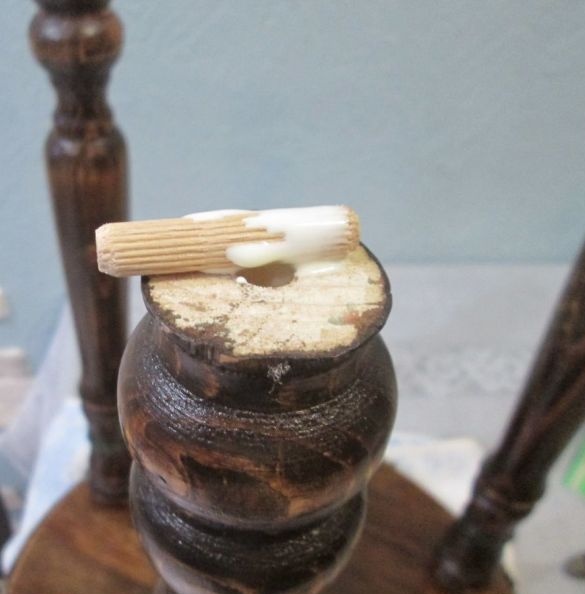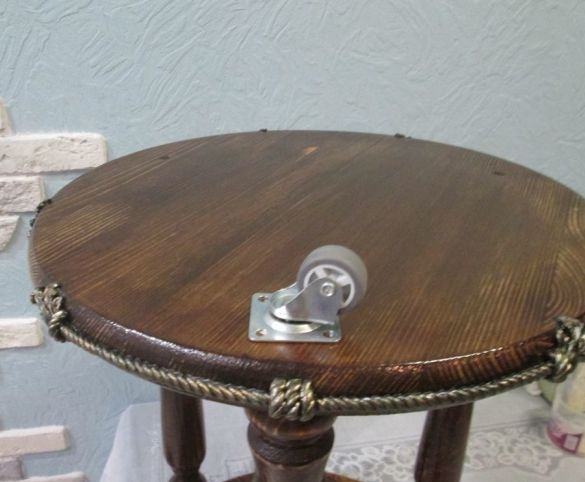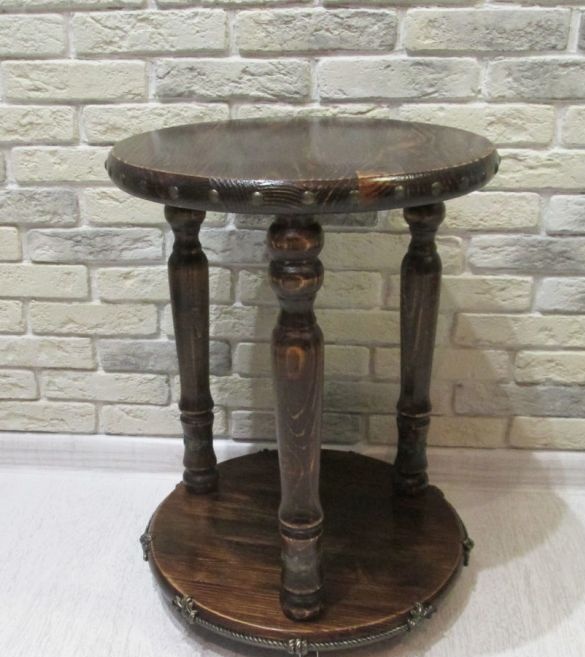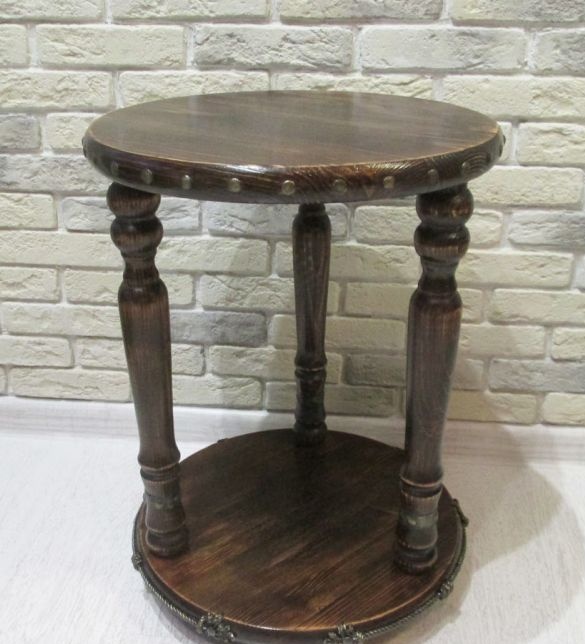I bring to your attention a wonderful, in my opinion, master class on making a coffee table with imitation of forged elements.
For work you will need:
Furniture panels - 2pcs diameter 38 mm
Furniture castors - 3 pcs.
Balusters - 3 pcs 50 * 50
Screws
Clamps
Round hat nails
Furniture dowels
Acrylic primer
Masking tape
Gas-burner
Water stain
Acrylic varnish
Self-hardening clay
Brushes
Joiner's glue for wood
PVA glue
Drill
Screwdriver
Abrasive
Wax patina
To begin with, the author bought all the wooden blanks in a specialized store and in order to shorten the legs - balusters they need to be sawed off, which the author proposes to do. To do this, the workpieces of the legs need to be clamped with clamps, if any, and sawed off.
On a round blank, draw a circle and outline the location of future legs.
Next, take the first workpiece and drill 3 through holes in it and at the bottom of the legs with a number 3 drill.
And in the second blank, make holes along the diameter of the furniture dowels, 1/2 of the width of the countertop and dowels to drill in the upper part of the legs.
Next, use a gas burner to burn the wooden parts, and then cover with an acrylic primer, after which a little sanding.
After treat with stain.
Open with varnish at least two times, between opening and sanding the surface.
The next stage is an imitation of forged elements.
Using a molar tape, it is necessary to note the desired width of the “forging” and putty into the resulting opening. Then take a regular dishwashing sponge and with a rough side create a slight roughness and leave it to solidify.
While the putty dries, you need to prepare the nails with a round hat necessary for decoration.
To do this, mix a small amount of black paint with acrylic varnish in a ratio of 1: 1.
Degrease the nail caps and paint with the mixture obtained.
Further, after the putty has dried, hammer the nails into the legs and into the upper workpiece of the table.
Then putty and nails with black paint and open with acrylic varnish.
Toned forging. The author used gold and bronze acrylic paints.
Then, using special forms and self-hardening mass, make forging elements and use PVA glue to glue on the legs and countertops, after drying, paint as well as the forging on the legs.
Assembly of the table.
After pre-lubricating the joints of the parts with carpentry glue, screw the legs to the lower tabletop with self-tapping screws.
Then glue the dowels with glue and insert them into the grooves in the legs. Then also grease and put on the upper countertop.
Screw the wheels so that you can not see the screws with which the legs are screwed.
The table is ready !!
Have a nice day and enjoy homemade!!!

